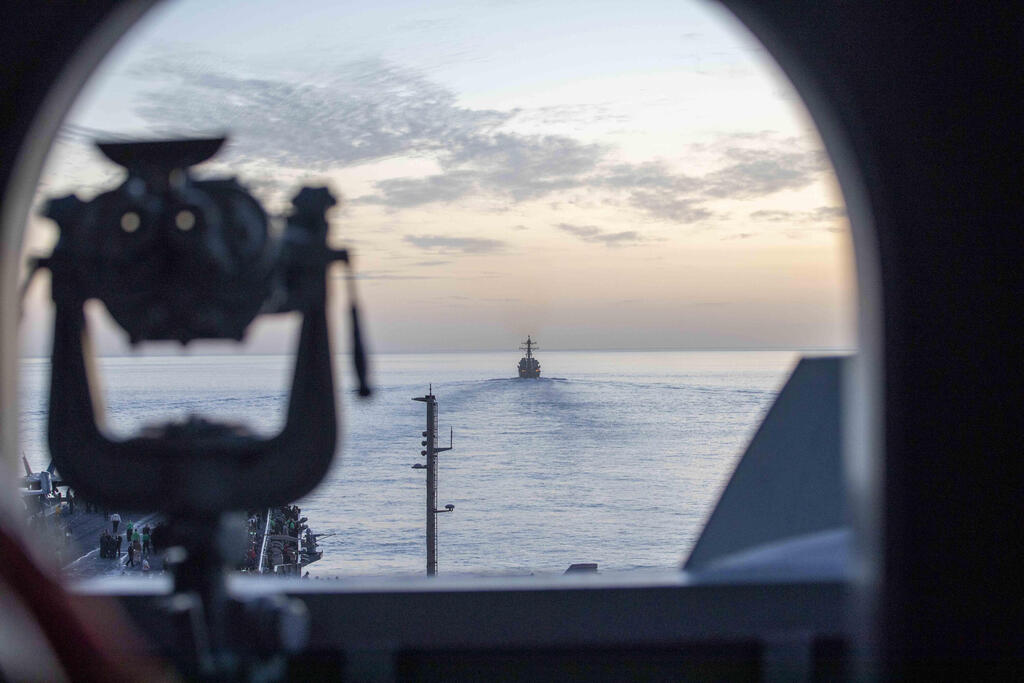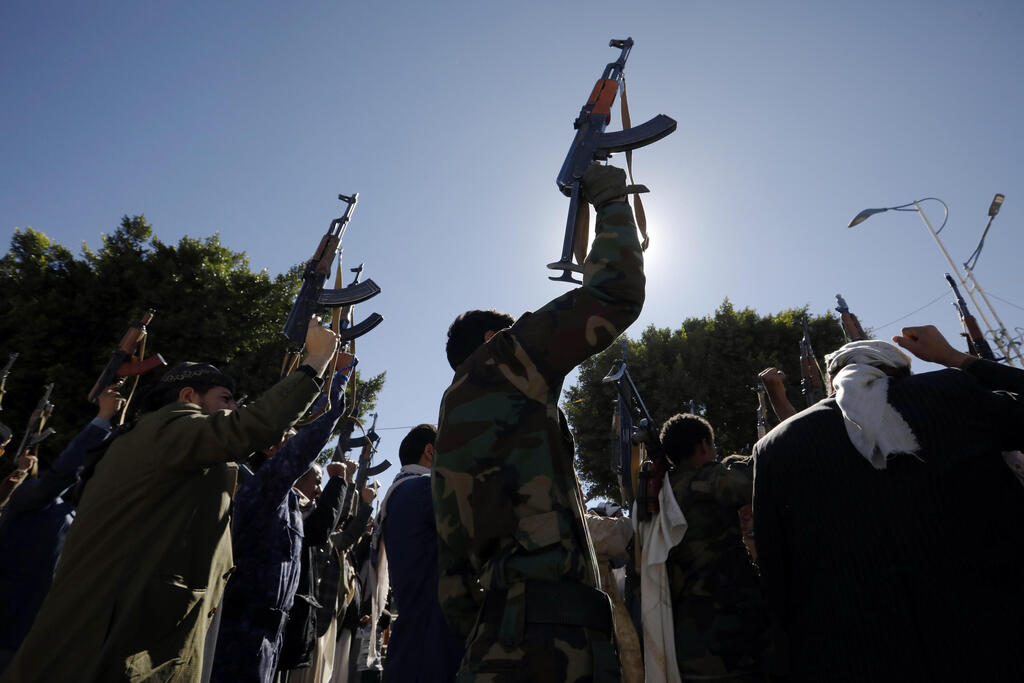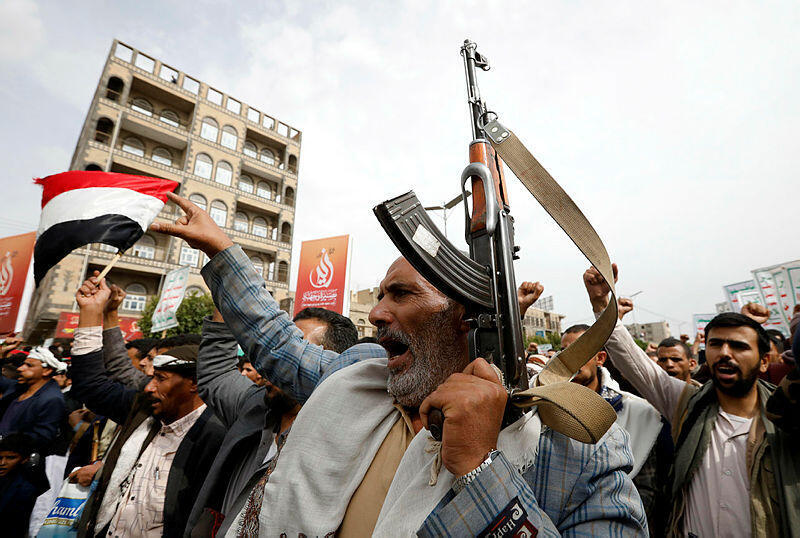Getting your Trinity Audio player ready...
The Houthi rebels, a terrorist organization comprised of Iran-backed Shiite tribes in Yemen, have intensified their attacks on Israel in recent days using long-range ballistic ground-to-ground missiles, cruise missiles, and various types of strike drones.
More stories:
A large part of this equipment was received from Iran, while others are produced locally. Over the years, its members have acquired expertise in operating these weapons, through training drills with Iran and advisors sent by Hezbollah from Lebanon.
It’s becoming clear that, among all its proxies in the Middle East, Iran has decided to use the Houthis as its main force against Israel during its war with Hamas, rather than Hezbollah or other groups closer to the country, even though Hezbollah's involvement may be much more "effective" from Tehran’s perspective.
It seems Iran has decided – possibly under the influence of Hezbollah Secretary-General Hassan Nasrallah and Syrian President Bashar al-Assad, who are not enthusiastic about sacrificing Beirut or Damascus to ease the pressure on Hamas – that it will fulfill its threat against Israel with forces located over 1,300 kilometers south of the country.
The Houthis are a terrorist organization that controls half of a ravaged country that is plagued by poverty and hunger. Even if it drags another country into military action against it, it won’t fundamentally change the economic situation in the country.
The Houthi rebels have gained significant experience during their years of fighting against the coalition formed in 2015 to fight against them led by Saudi Arabia. At that time, they used drones and long-range ballistic missiles to target oil facilities in the kingdom, causing significant damage to the oil industry in the United Arab Emirates. In another case, they even attacked an American warship using a coastal cruise missile.
Another consideration in Iran's choice is the Houthis’ distance from Israel. In order to strike back at them, the IDF would require a complex aerial and naval strategic operation. And this is while already being continuously engaged in the Gaza Strip, and preparing for a potential large-scale confrontation with Hezbollah and possibly Syria on the northern border.
Additionally, it's reasonable to assume that a single operation in Yemen will not put an end to the Houthis' attempts to harm Israel. Remember, they have a vast stockpile of missiles of all ranges and various types of drones, and have already proven their ability to sustain combat for a period of nearly eight years against Saudi Arabia and the UAE. They didn’t surrender and even dealt significant damage.
Although a cease-fire was declared in the conflict in April, the Houthis killed two Saudi soldiers on the border in the Jazan Province last week. This may be a retaliation against the Saudis, who, according to American reports, intercepted a ground-to-ground missile launched by the Houthis toward Eilat. It’s very likely then that Saudi Arabia and Israel find themselves on the same side.
A danger to shipping lanes
The Houthis are dangerous not only because of their varied military capabilities and rockets that can reach southern Israel but primarily due to their threat to shipping lanes in the Red Sea and the Bab-el-Mandeb strait.
The shipping route going through the Indian Ocean is a crucial international trade node between Asia and Europe, including Israel. The Houthis pose a threat to this vital maritime chokepoint, so any decision to take action against the Yemeni group must consider this threat as well.
These considerations underpin the decision of U.S. President Joe Biden to deploy two naval task forces to the Middle East: one centered around the Gerald R. Ford aircraft carrier and the other around the Dwight D. Eisenhower aircraft carrier.
Several guided-missile destroyers and U.S. Marine Corps ships that belong to the Gerald R. Ford strike group operating in the Eastern Mediterranean have transited the Suez Canal and are positioned near Yemen. One of these destroyers, the USS Carney, intercepted the first batch of missiles and strike drones the Houthis launched against Israel.
4 View gallery


The USS Dwight D. Eisenhower
(Photo: AFP PHOTO / US Department of Defense/US Navy/Mass Communication Specialist Seaman Rylin Paul)
Currently, the destroyer continues to patrol off the coasts of Yemen and Saudi Arabia, though at a safe distance. It appears the U.S. is likely providing early warning to Israel of Houthi launches, which can travel directly north above the Red Sea and the Gulf of Aqaba or through Saudi and Egyptian territory.
The USS Carney probably won’t intercept missiles heading over Saudi or Egyptian territories, as it would be a violation of their sovereignty. Therefore, Israel seems to be preparing to face launches toward Eilat using its own ability: long-range interceptions are carried out using Arrow missiles, while short-range interceptions use Patriot missiles, which are also suitable for intercepting strike drones.
Most drones, however, are targeted using the Israeli Air Force’s (IAF) fighter jets, equipped with missiles and anti-aircraft artillery. In addition, the Navy is sending ships to areas in the Red Sea and the Gulf of Aqaba to bolster Israel’s early warning capabilities also provided by U.S. Navy ships.
Dealing with the threat
Israel knows how to deal with the Houthi threat, and the question remains whether Israel needs to respond. The likelihood that the U.S. will act isn’t high because the Biden administration currently has an interest in reducing tensions and not being directly involved in a high-profile conflict.
This is precisely what the Iranians are counting on. Therefore, Israel faces a dilemma that will only grow heavier and force it to reevaluate the situation if the Houthis attempt to expand the conflict into the maritime arena, threatening trade routes in the Bab-el-Mandeb area. The Iranians have done so in the past.
One silver lining for Israel is the fact that Tehran has decided not to allow Hezbollah to intensify its fighting against Israel and has chosen the Yemeni terrorist organization as its main arm in the conflict.
This places Israel in the face of a strategic challenge on its southern border. It will need to coordinate its actions with the U.S. Central Command, as the maintenance of freedom of navigation in the Persian Gulf and the Gulf of Oman is within its purview.
Ultimately, the Iranians have founded a coalition against them and the Houthis, with Israel, the United States and Saudi Arabia as its members. This coalition, relying mainly on the reinforcement of the American naval presence off the coast of Yemen and the bolstering of Israeli air defenses in the northern Red Sea, is the solution to the problem, at least until the situation in Gaza is resolved.





